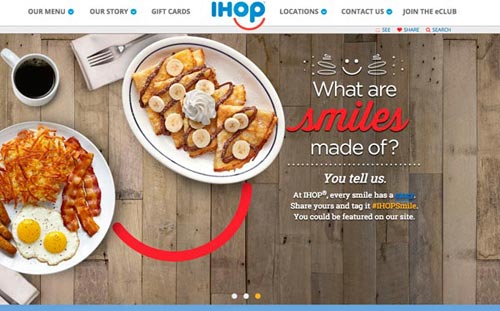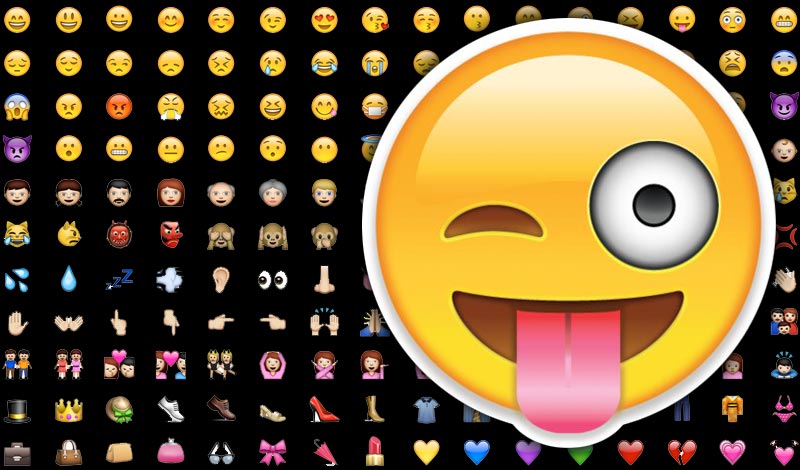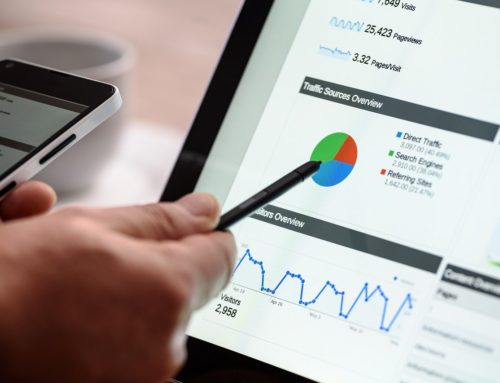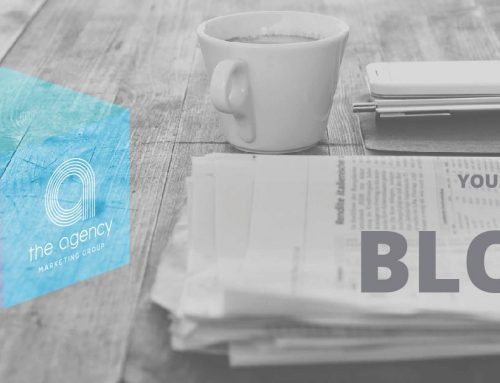Because you can use them with everything.
We all love the little guys, they’re like tiny illustrations in the children’s books that are our messages and comments. Emojis are universally understood, and even if they aren’t fully UNDERSTOOD, we make up meanings to go with them, according to our cultural point of view. And they make texting and online interaction more fun. They even get thrown in with serious conversation, like: I’m really sorry your cat died 🙁 , for example. And when you’re talking about marketing or brand reactions, emojis can tell you a lot! They can let you know, visually, how people feel about a brand or product.
 More and more companies are starting to realize the impact that emojis have on our every day conversations, and they are changing their logo designs accordingly. IHOP, for example, has turned the O and the P in its 20 year old logo into an emoji-similar smiley face. And their new promotional phrase that accompanies the smiley face logo is, “What are smiles made of?”. You can respond to IHOP’s query with hashtags and through online profiles, and possibly have your story featured on their website. Emojis and pancakes.
More and more companies are starting to realize the impact that emojis have on our every day conversations, and they are changing their logo designs accordingly. IHOP, for example, has turned the O and the P in its 20 year old logo into an emoji-similar smiley face. And their new promotional phrase that accompanies the smiley face logo is, “What are smiles made of?”. You can respond to IHOP’s query with hashtags and through online profiles, and possibly have your story featured on their website. Emojis and pancakes.
Bigger multinational brands such as McDonald’s, IKEA, World Wildlife Fund, and Pepsi are beginning to pick up on the trend as well. They are doing so because emojis are a truly international language, like cave paintings from thousands of years ago, people from all over the world GET them. Adrian Cockle, the digital innovation manager at WWF, says that the universal appeal that comes from their symbolic nature diminishes problems for marketers working on an international level. WWF has even started a fundraiser involving endangered animal emojis. After seeing that 17 of the animal emojis are actually endangered species, they started a program that encourages people to tweet an image of all 17 endangered animal emojis, then with each subsequent endangered emoji that they tweet, they pledge to donate €0.10. At the end of one month, users are given a report of how many times they tweeted the images, and the according sum; they can donate that amount, more, less, or nothing at all if they choose. So far, they have seen a response from countries all over the world, with the strongest engagement in the UK, US, France, Poland, and Thailand. Since it’s inception, the campaign has been mentioned on Twitter almost 580,000 times! That’s a lot of exposure! These emojis are being put to good use for a great cause, and helping to engage people with these fun, illustrative little characters.
Think about what YOU can do, marketers!



Leave A Comment